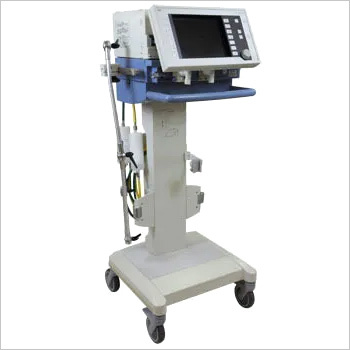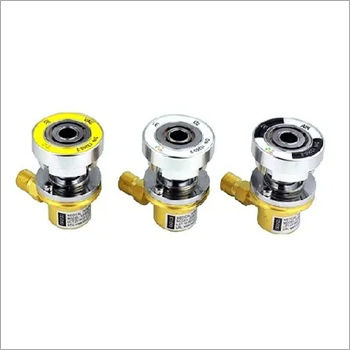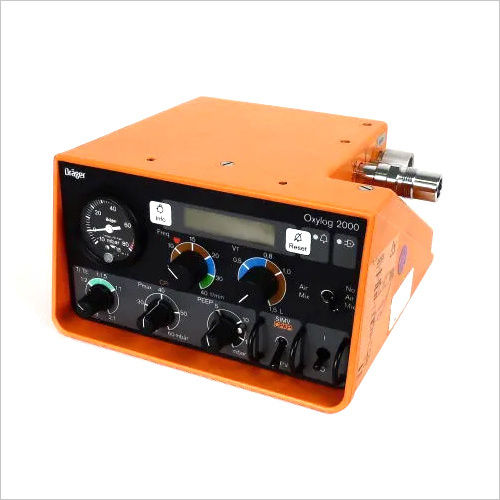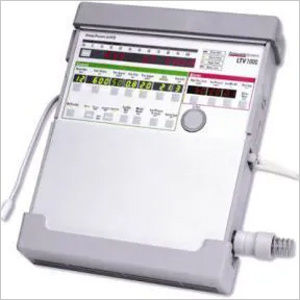
Drager Evita 4 Ventilator
Product Details:
Product Description
Specifications :
The Dräger Evita 4 is a ventilator for every patient population. The Evita 4 was designed to meet the demanding requirements of the ICU environment by improving the interactions between patient, ventilator and clinician. The functional touch screen continually provides the clinician information on ventilator settings, patient measurements and advanced trending capabilities which enhances the operation of the device. Unique features and modalities such as AutoFlow™ and APRV are standard on all Evita 4 ventilators.
Ventilation Settings :
- Ventilation mode:
- IPPV, IPPVAssist (CMV, CMVAssist)
- SIMV, SIMVASB (SIMV, SIMV/Psupp)
- MMV, MMVASB (MMV, MMV/Psupp)
- BIPAP1), BIPAP1)ASB, BIPAP1)Assist (PCV+, PCV+/Psupp, PCV+Assist)
- CPAP, CPAPASB (CPAP, CPAP/Psupp)
- APRV (optional)
- ILV (optional)
- Enhancements
- AutoFlow™ – Automatic adaptation of inspiratory flow in volume controlled modes
- ATC™ – Automatic Tube Compensation (optional)
- IV - Mask Ventilation (optional)
- Ventilation frequency (f): 0 to 100 /min, 0 to150 /min (Neonatal)
- Inspiration time (Tinsp): 0.1 to 10 s
- Tidal volume (VT) (BTPS):
- 0.1 to 2.0 L (Adult)
- 0.02 to 0.3 L (Pediatric)
- 0.003 to 0.1 L (Neonatal)
- Inspiratory flow:
- 6 to 120 L/min (Adult)
- 6 to 30 L/min (Pediatric and Neonatal)
- Inspiratory pressure: 0 to 80 mbar (cmH2O)
- PEEP / intermittent PEEP: 0 to 35 mbar (cmH2O)
- Pressureassist (PASB) (Psupp): 0 to 80 mbar (cmH2O)
- Rise time for inspiratory pressure: 0 to 2 s
- O2 concentration: 21 to 100 Vol.%
- Multi-sense Trigger Criteria: Internal automatic pressure trigger, Flow, Volume (Flow adjustable 0.3 to 15 L/min)
Measured Values Displayed :
- Airway pressure: Peak pressure, plateau pressure, mean pressure, PEEP, min. pressure (0 to 99 mbar/cmH2O)
- Minute volume (MV), (BTPS): MV, MVspont, MVleak (0 to 99 L/min)
- Tidal volume (VT), (BTPS): Inspired VT, expired VT, VTASB (VTPS) (0 to 3999 mL)
- Breathing frequency (f): ftotal, fspon, fmand. (0 to 300/bpm)
- O2 concentration: (FiO2) Inspired O2 concentration (15 to 100 Vol.%)
- Lung mechanics:
- Resistance ((0.0 to 600 mbar/L/s)(cmH2O/L/s)
- Compliance ((0.0 to 300 mL/mbar)(mL/cmH2O)
- Breathing gas temperature: 18°to 51°C
- Waveforms: Airway pressure-time, flow-time, volume-time, ...
- Trends (optional): FiO2, MV, VT, f, PEEPi, R, C, etCO2, ...
- Loops (optional): Paw-V, V-Flow, Flow-Paw, ...
- Capnography (etCO2) (optional): 0 to 100 mmHg
- CO2 production (VCO2): 0 to 999 mL/min, STPD
- Serial dead space Vds: 0 to 999 mL, BTPS
- Dead space ventilation (Vds/VT): 0 to 99%
- O2 saturation: SpO2, pulse
Alarms / Monitoring :
- Airway pressure: High/Low
- Expired minute volume: High/Low
- Tidal volume: High
- Apnea alarm time: 5 to 60 s
- Spontaneous breath frequency: High
- Inspired O2 concentration: High/Low
- Breathing gas temperature: High
- SpO2 pulse (optional): High/Low
- etCO2 (optional): High/Low
Performance Data :
- Max. flow for pressure support and spontaneous breathing: 180 L/min (adult), 60 L/min (pediatric)
- Valve response time: ≤ 5 ms
- Control principle: Time cycled, volume constant, pressure-controlled
- Safety relief valve: 100 mbar (cmH2O)
- Leakage compensation
- Hose system compensation
- Outlet for pneumatic nebulizer
Operating Data :
- Mains power connection: 100 to 240 V, 50/60 Hz, 10 to 30 V DC (optional)
- Power consumption: Approx. 125 W
- Gas supply operating pressure: O2, air: 2.7 to 6 bar / 39 to 87 PSI









